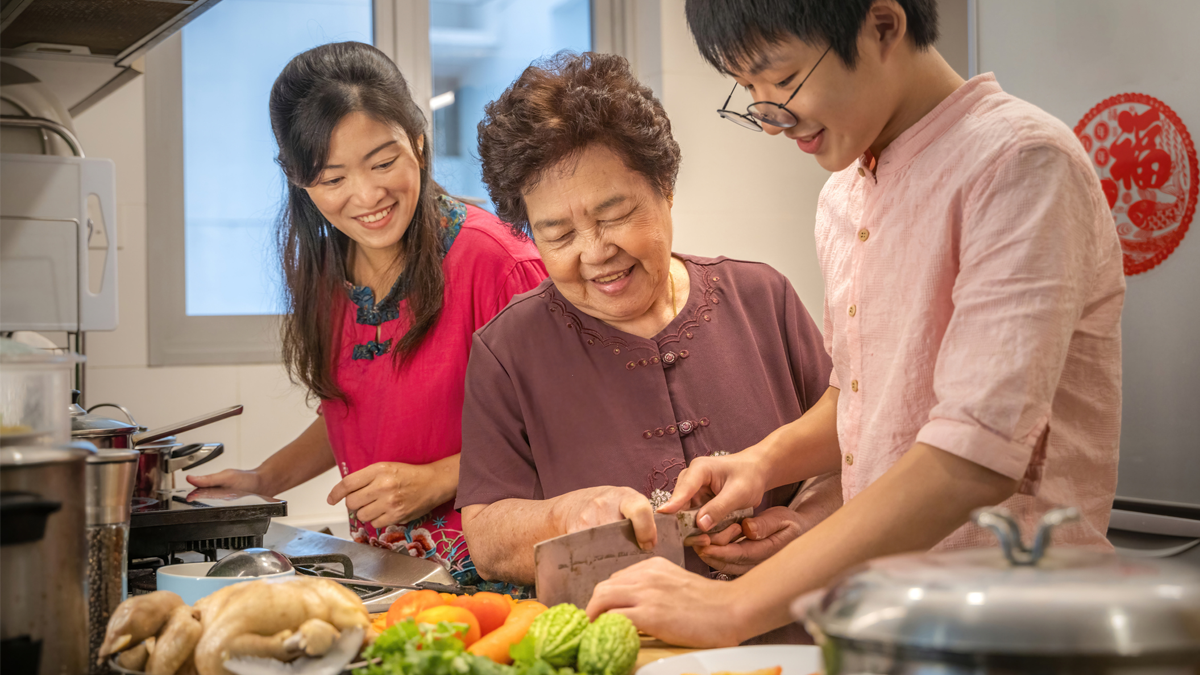Diabetes and Cultural Foods

The cultural importance of food is passed down from generation to generation, connecting you to ancestors.
Eating a healthy diet is key to managing diabetes and preventing serious complications. And some of your favorite traditional foods can be a part of that. Learn how to prepare foods that connect you to your culture while keeping your blood sugar in your target range.
If you have diabetes, you’ve probably been told how important healthy eating is for managing your blood sugar. And you’ve probably thought to yourself, “Does this mean I have to give up all the foods that I love? The foods that I grew up with?”
Many people connect to their culture through the foods they eat. The cultural importance of food is passed down from generation to generation, connecting you to ancestors and allowing you to tell their stories through food. It’s hard to feel like you might have to give up your history to manage your health. But the good news is that you can still enjoy many of the foods that you and your family love and manage your diabetes too.
Embracing Cultural Foods
There are several myths about cultural foods—that they’re all unhealthy and shouldn’t be part of your diet. But many traditional ingredients have always been healthy and versatile. For example:
- Leafy greens are traditional to African American dishes, also called “soul food.” Collard greens, mustard greens, kale, and spinach (known collectively as “greens”), when part of a healthy diet, can help manage your blood sugar.
- Quinoa is a popular “health food.” But did you know that quinoa is a major food staple in Latin America? Traditional Latin American dishes often use ancient grains like quinoa. It’s a great source of fiber and has many health benefits, especially for people with diabetes.
- Legumes like beans, peas, and lentils are an important part of healthy eating and commonly found in world cuisines. Lima and navy beans are often found in African American dishes, pinto and black beans in Hispanic and Latin dishes, and lentils and chickpeas in traditional Indian meals. Legumes provide protein and fiber, and they are low in fat, which can help you lower your cholesterol, manage your blood sugar, and maintain a healthy gut.
Enjoying Your Favorite Foods
Healthy eating can be about making the foods you love and grew up with fit your needs and health goals. For example, say your favorite dish is arroz con pollo (chicken and rice). You can use skinless chicken breast, which is lower in fat than other parts of the chicken like the thigh. You can even swap out white rice for brown rice or cauliflower rice. These can be healthier options while maintaining the spices and flavors of the original dish. Here are a few more examples for making your favorite dish diabetes-friendly:
- Smothered greens: You can swap out high-sodium, high-fat meats with smoked, skinless turkey breast. This way you keep the flavor but reduce the fat and sodium.
- Potato curry: Instead of using potatoes in this classic Indian dish, you can swap out the potatoes with lentils and cauliflower. The lentils are a healthier starchy vegetable while the cauliflower gives the dish a nice texture.
- Fajita tacos: Replace beef fajitas with shrimp or chicken instead, or you can skip the meat altogether for a vegetarian taco. You can also use corn tortillas instead of flour. Corn tortillas tend to be lower in calories and carbs and are higher in fiber than flour tortillas.
Talk With Your Diabetes Health Care Team About Your Culture
Your diabetes meal plan will be specific to your needs, so it’s best to talk to your diabetes care and education specialist about your health goals before you make any changes to the foods you eat. These goals will take into account your blood sugar, weight, and blood pressure.
Successfully managing diabetes is about adopting a healthy lifestyle that fits your needs and preferences. It’s important to talk to your diabetes care and education specialist about your culture. This can help them understand your customs and traditional foods so they can help you design a meal plan that is nutritious and culturally rich. Here are a few things you may want to discuss:
- Your health-related values and beliefs.
- How culture plays a role in your eating habits. This could include religion, eating practices, rules, and customs.
- Tips on how to involve your family with preparing diabetes-friendly meals.
- Recipes for your favorite meals and how to make swaps or adjustments to fit your needs.
- Portion sizes that are right for you.
Changing the way you eat can be tough at first. And it can be especially challenging if you’re diagnosed with diabetes. But having diabetes doesn’t mean giving up who you are. It doesn’t define you. You are still you, and with some small changes, you can still enjoy your favorite things.